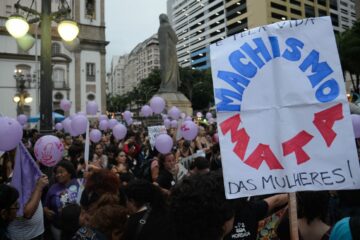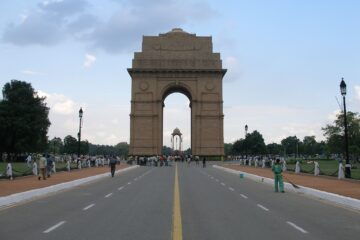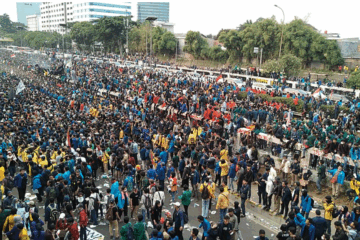In 2006, the UN declared homelessness in Canada a “national emergency.” What should have been a wake-up call for the federal government to tackle the country’s history of growing homelessness since the 1980s has, instead, been largely ignored. Today, COVID-19 has only exacerbated issues related to homelessness as rates of unhoused individuals have risen, making safety measures more difficult to maintain in shelters. A look at Montréal’s housing crisis in the context of COVID-19 reveals the systemic issues of federal spending that must be addressed in order to provide safe, affordable housing for all.
Each year in Montréal, rents and the risk of homelessness for the average person are increasing. In fact, in the average single-person household, nearly 50% of one’s income is spent on rent, leaving little room for other necessary expenses. This dynamic, however, is not unique to the City of Montréal. Canada has the highest housing-price-to-income ratio of all the advanced economies in the world. The Montréal Charter of Rights and Responsibilities declares that the City is committed to account for “the needs of vulnerable persons and particularly families with low or modest income.” In order to do so, however, it must be recognized that private housing has long been out of reach for many low-income households. Subsequently, it is time for the federal government to look into increasing investment in public housing and social supports, as well as strengthening real estate speculation regulations.
Indigenous Peoples are disproportionately affected by homelessness in Montréal and across Canada, a notion rooted in the country’s colonial history of systemic discrimination. Such discrimination has led to the majority of Indigenous Peoples residing in urban areas with inadequate support systems, as well as entrenched racism and exclusion in work and housing markets. In Montréal’s 2018 homelessness count, it was found that an Indigenous person was 27 times more likely to experience homelessness than a non-Indigenous person. In an even more alarming revelation, an Inuk individual was found to be approximately 80 times more likely. The lack of support for the Indigenous population perpetuates many into cyclical homelessness in the long term. Thus, there is an urgent need for social housing in Montréal that is Indigenous-focused.
The health risks of homelessness for Indigenous individuals in Montréal have only increased with the onset of the pandemic. Unhoused people are ten times more likely to end up in intensive care and five times more likely to die once they catch the virus. Between Christmas and New Years’ Day of 2021, 27 housing shelters experienced COVID-19 outbreaks. The impact of the virus has been severe on the unhoused population as a direct result of general health risks that come with homelessness and low vaccination rates due to accessibility issues.
To make matters worse, this has all been taking place in Montréal’s blistering cold winter. While shelters are vital to providing unhoused people protection from the unlivable outdoors during this time, they have now also transformed into breeding grounds for the virus. Most housing facilities, due to disproportional resources allocated in relation to the unhoused population, don’t have the space or resources for social distancing.
The labyrinth of intersecting forces that make the livelihoods of unhoused individuals, particularly Indigenous unhoused individuals, nearly impossible in Montréal has caused numerous tragic deaths over the past year. Since January 2021, five unhoused individuals have been reported dead in the city. The first of such tragic passings was Raphael Andre, an Innu-Naskapi man from Matimekush-Lac John in Northern Quebec who was found dead inside of a port-a-potty near the shelter he frequented. More recently, two unhoused individuals died within ten days of each other in January. The first was a 64-year-old woman named Stella, who frequently visited the Place Dupuis shelter before it closed. She was found in cardiopulmonary distress near the Berri-UQAM Metro station on the morning of January 20 during -20c temperatures and was pronounced dead shortly after. The second was a 74-year-old man found under an overpass in the Notre-Dame-de-Grâce neighbourhood in a makeshift camp on January 10. He was pronounced dead at the hospital. As shelters for the unhoused have been overcrowded and are not continuously open (closing midday and requiring residents to leave and reenter each day), many are left to fend for themselves despite extreme elements
Temporary measures have been put in place to attempt to contain the spread of the virus and protect unhoused individuals from the deadly cold. Mayor Valérie Plante announced on January 11 2022 that the City of Montréal would convert the indoor soccer stadium into an emergency shelter with 300 cots starting January 13. The stadium is managed by the Old Brewery Mission in collaboration with their community partners of the CIUSSS Centre-Sud-de-l’Île-de-Montréal, the Canadian Red Cross, and the STM. This allowed for the relocation of those infected with COVID-19 to a separate shelter, and the potential to slow the spread of the virus amongst the unhoused. The stadium is set to remain open for as long as needed. On January 19, Old Mission Brewery, in need of additional professional support for the attendants at the stadium, put out a call for staff. In addition, a warming tent named after Raphael Andre has been put in place in the Cabot Square area, a spot frequented by the unhoused Indigenous population of Montréal. The tent, however, has been functioning at well over capacity for over a year. Public health restrictions only allow for fifteen people a night and, on December 14, the tent sheltered 611 individuals. As the insufficient resources of these temporary measures show, there is a need for long-term strategies to be put in place to support Montréal’s unhoused, predominantly Indigenous, population.
On a hopeful note, there have been efforts by different organizations to look into more innovative and holistic short-term solutions for the housing crisis. The “wet shelter” run by Projets Autochtones du Quebec (PAQ) which opened its doors on January 21 for the Indigenous unhoused population downtown is an example of a facility that prioritizes the wellbeing and support of unhoused individuals through and out of homelessness. The wet shelter sleeps up to fifty people and has an outdoor terrace where alcohol and cannabis can be consumed under supervision. In addition, the shelter does not close, allowing guests to stay during the day without facing the outdoors and the risk of being denied access to the shelter at night due to overcrowding.
It is time for the federal government to take into account the realities of unhoused individuals in its urban areas. Homelessness, when there is a lack of structures in place to support unhoused individuals, is expensive for the City of Montréal. It costs the city $56,000 per unhoused individual per year as a result of avoidable services like policing and emergency room visits used currently to aid the community as a last resort. As more and more lives are being lost to the unlivable conditions of the outdoors and overcrowded indoors, there is an urgent need for increased federal investment in public housing and social supports. Both short-term solutions like wet shelters and long-term solutions like the monitorization of rents to lower the housing-price-to-income ratios are imperative.
Feature Image by Miville Tremblay




